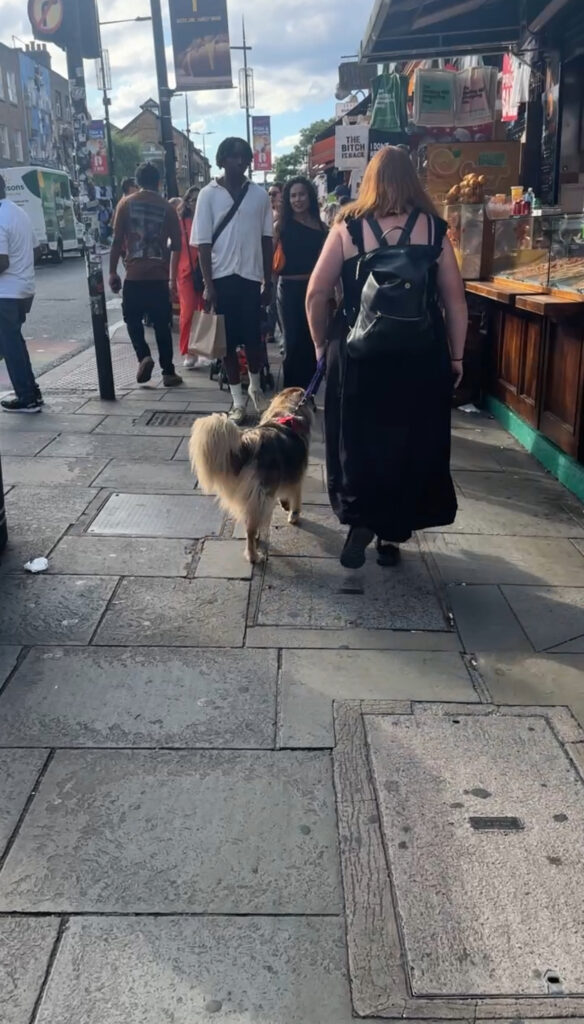
Walking your dog should be one of the best parts of your day—a chance to enjoy the outdoors, explore, and connect with your dog. But let’s be honest, when your dog is pulling like a freight train, it’s hard to enjoy anything! Loose lead walking can transform those stressful walks into something calm and enjoyable for both of you.
For me, loose lead walking isn’t about strict obedience or expecting your dog to stay glued to your side. It’s about finding balance—letting your dog explore and sniff while still staying connected to you. It’s so rewarding when you’re both walking together as a team, and it’s one of the first skills I focus on with my dogs. Not only does it make walks more pleasant, but it also helps build trust and communication. Plus, no more sore arms or pressure on their neck from constant pulling!
When I’m starting loose lead training with a young dog like Trixie, I keep things really simple. It all begins before we even leave the house. If she’s bouncing around or pulling at the door, we pause. I wait for her to settle and reward her for being calm. I’ve found this step is so important—it sets the tone for the whole walk. Trixie learns that pulling won’t get her anywhere, but calm focus will.
Once we’re out, I reward her often for staying close to me or checking in. For Trixie, this might mean giving her a treat or some praise. Every dog is different, so it’s about finding what motivates them most. The idea is to make walking beside me more rewarding than pulling towards that interesting smell or exciting distraction.
But loose lead walking training doesn’t end with the walk itself. Like so many other basics, it’s crafted through a strong bond and a mindset where the dog would rather be with you than doing anything else. For me, this mindset is forged from day one with a new dog or puppy. And yes, it works with older rehomed dogs too! I build this relationship through games-based training throughout the day. I might play a quick game while waiting for the kettle to boil or after finishing a bathroom break. On the way back, I’ll take a moment to play another game. These little interactions all add up and help my dogs see me as the most rewarding part of their world.
Consistency is key. Every time you practise loose lead walking, you’re teaching your dog what you expect from them. But here’s the thing—if you don’t have time to rehearse loose lead walking properly, don’t go out for a walk. Instead, spend time playing games or teaching your dog a new trick at home. Then head out for your walk when you can focus on rehearsing the behaviour you want. Remember, every time your dog rehearses an unwanted behaviour like pulling, it becomes more ingrained. The behaviour they practise is the one they’ll rely on, so it’s worth prioritising quality over quantity.
I also try to make myself interesting during our walks. If Trixie starts to lose focus, instead of getting frustrated or yanking on the lead, I’ll change the pace or direction to grab her attention. It’s like a little game—dogs love movement, and it keeps her engaged with me.
In the early stages, I keep our walks short and choose quiet, low-distraction areas to practise. Once Trixie is doing well in those settings, I slowly introduce more challenging environments, like busier streets or parks. It’s all about setting her up to succeed by building her confidence step by step.
What I love most about loose lead walking is that it’s such a bonding experience. Every little win—whether it’s Trixie staying calm at the door, choosing to focus on me, or walking beside me through a new environment—reminds me why I love training. It’s not just about teaching her a skill; it’s about building a relationship where we’re both enjoying the journey.
If you’re working on loose lead walking, remember to celebrate the small wins. It takes time, but each positive step gets you closer to those relaxed, connected walks we all want.
Leave a Reply